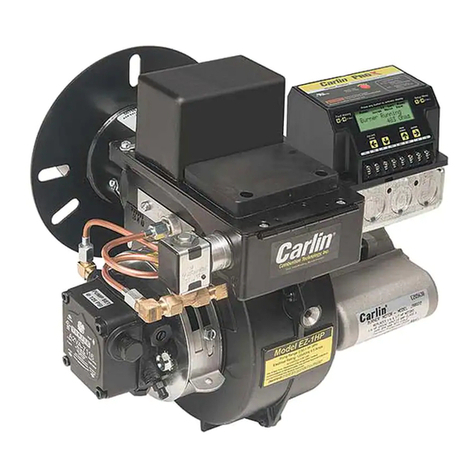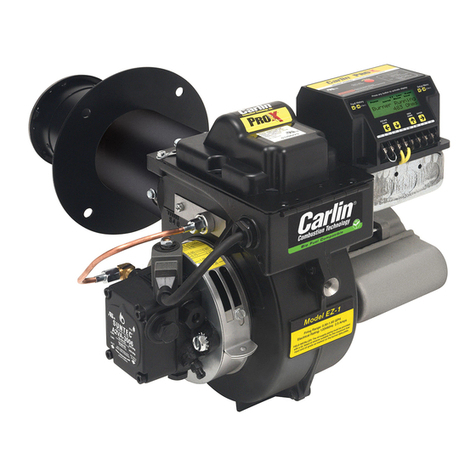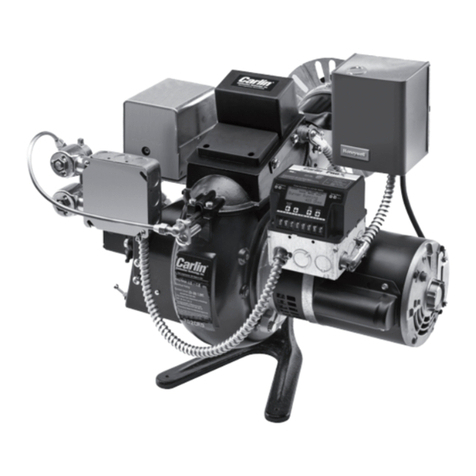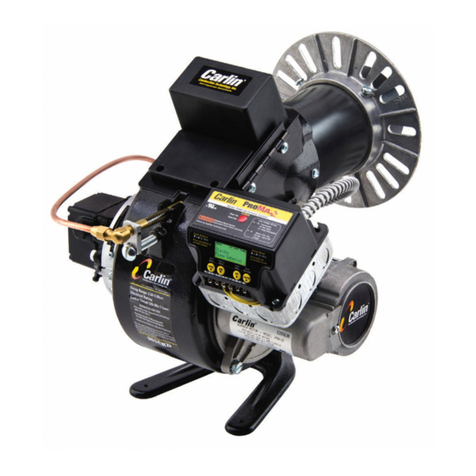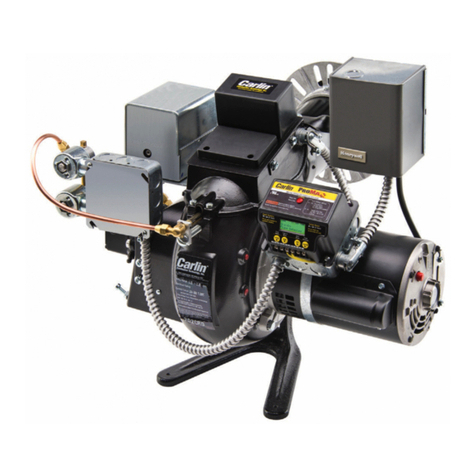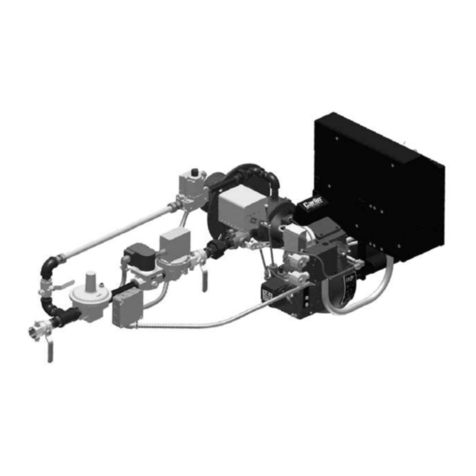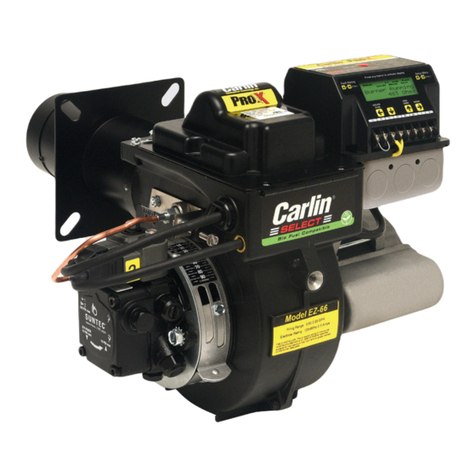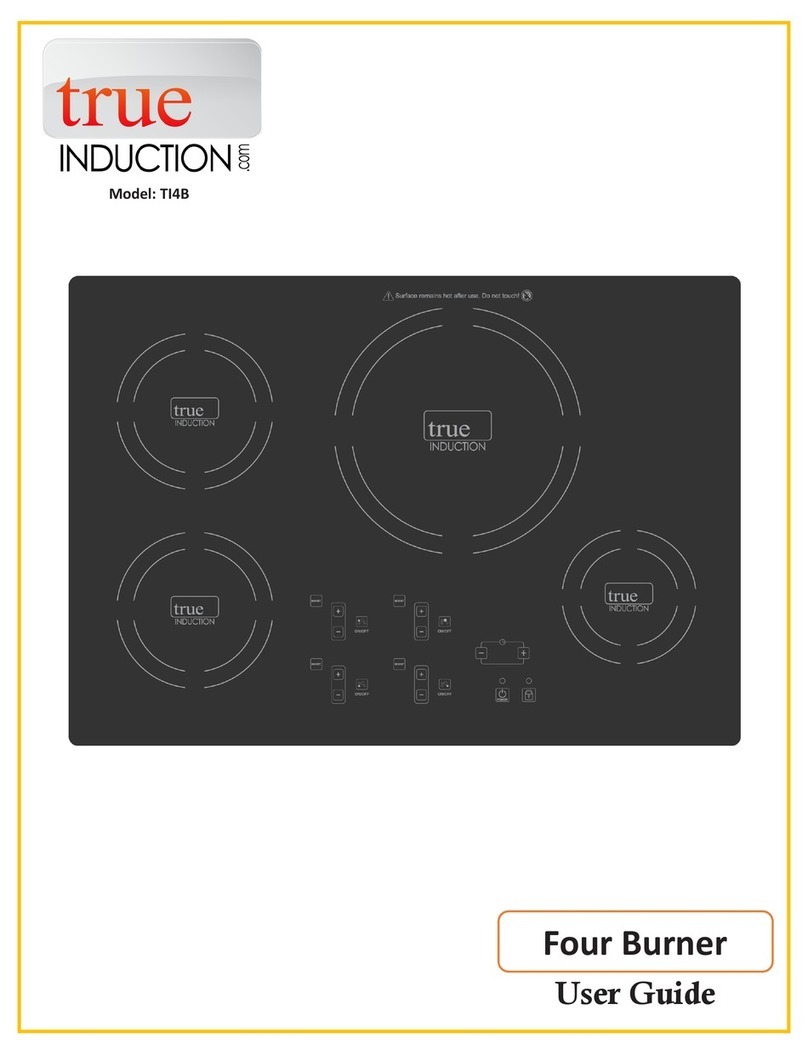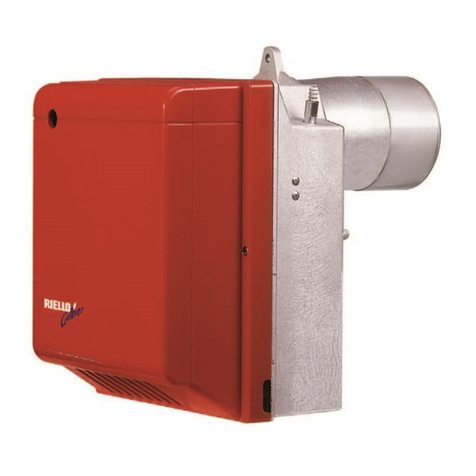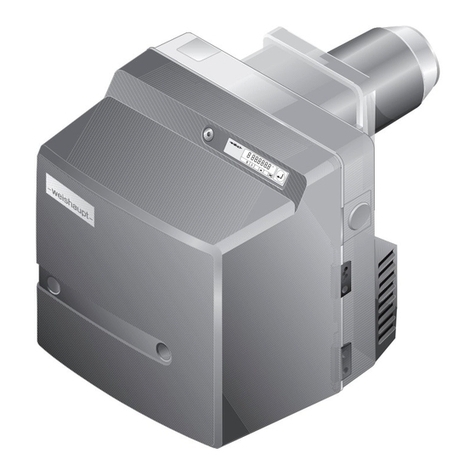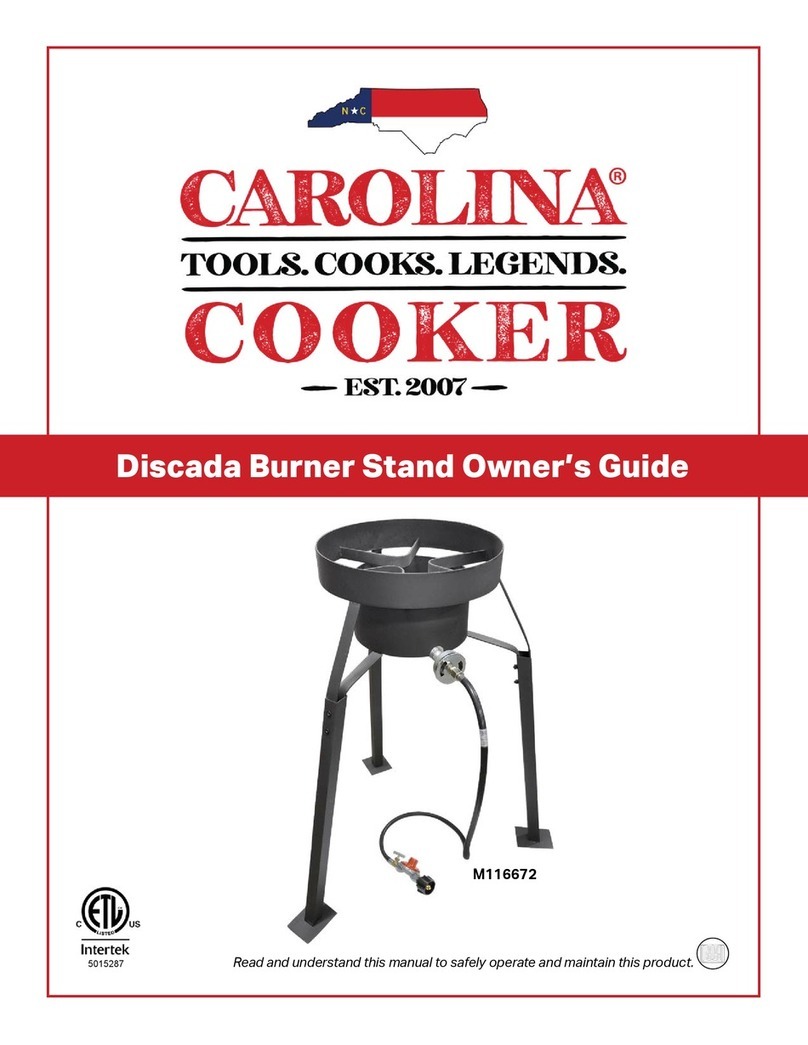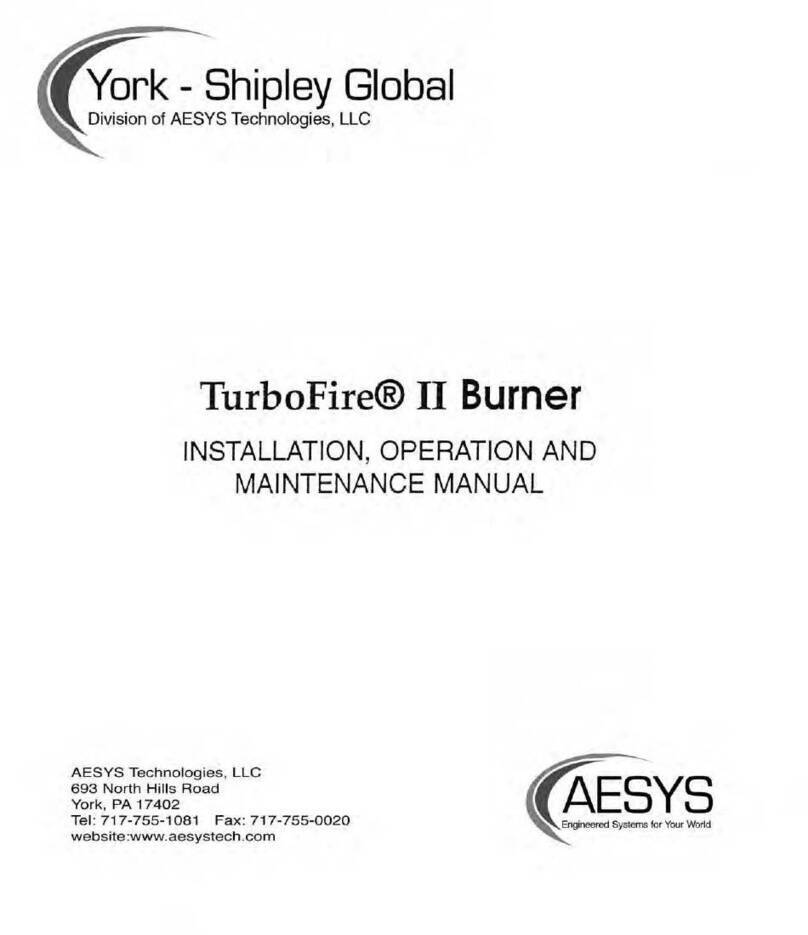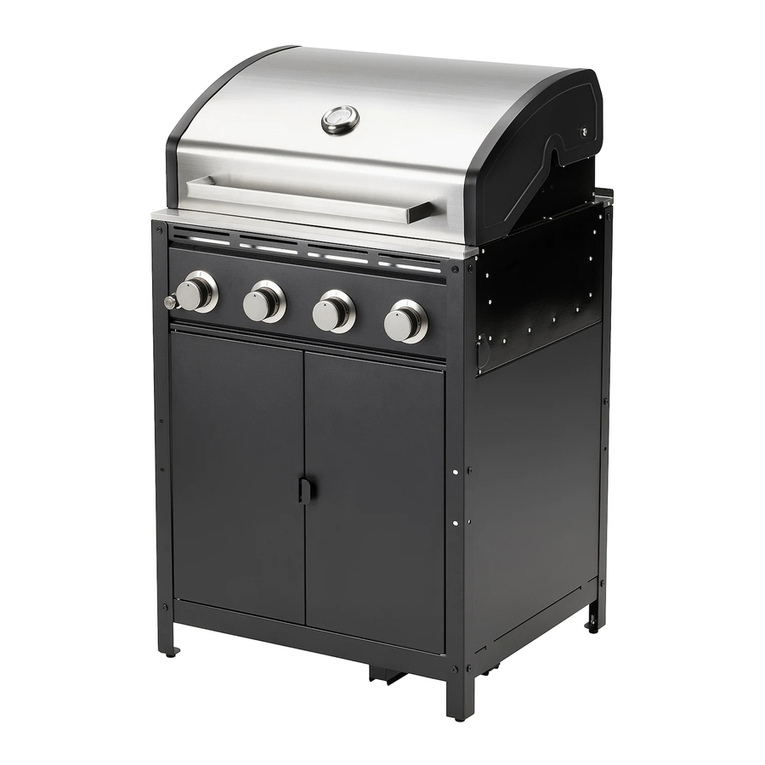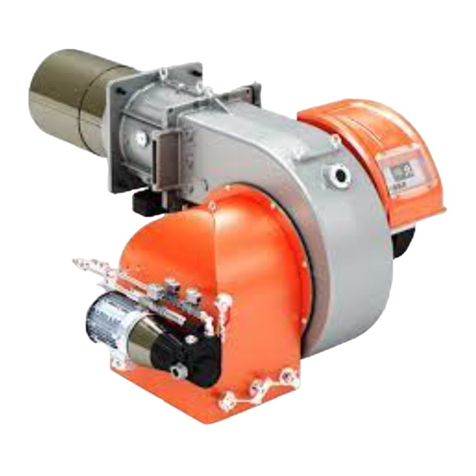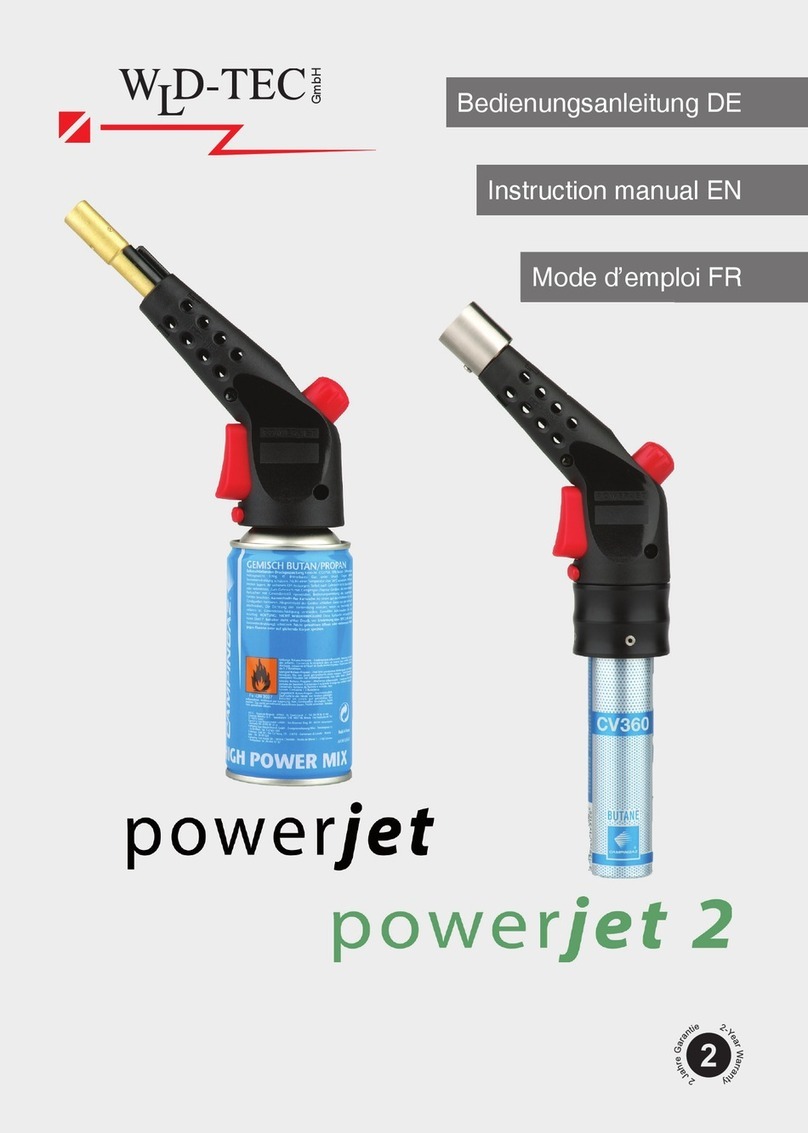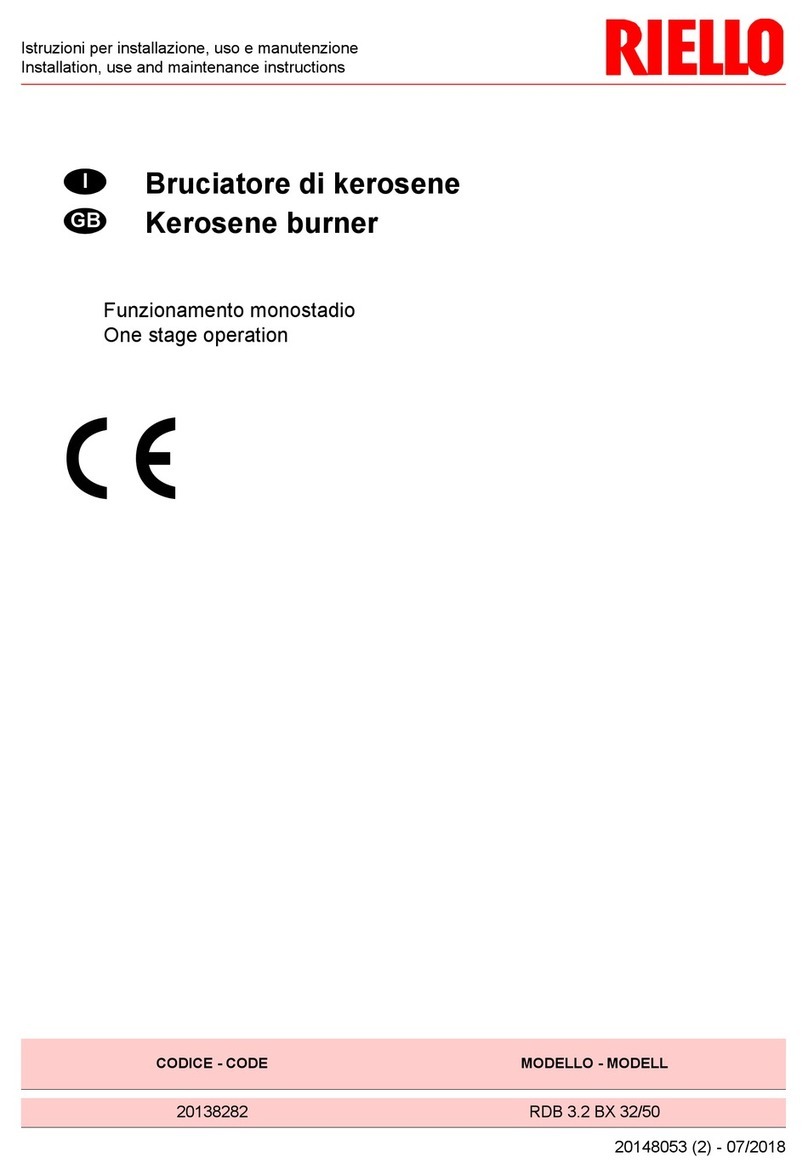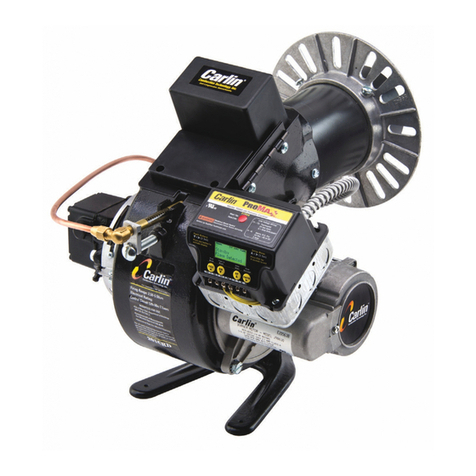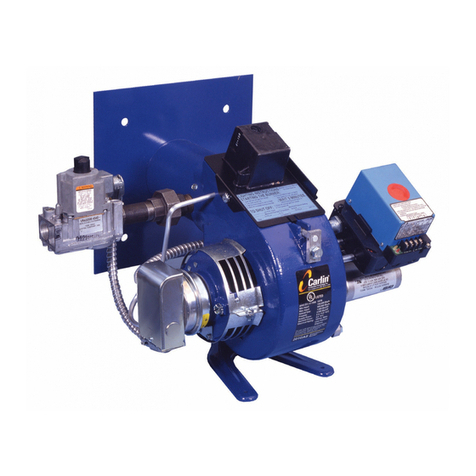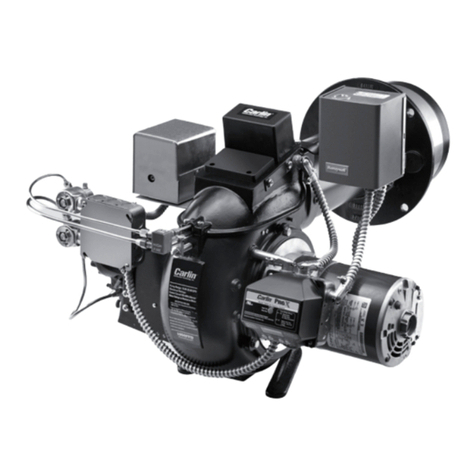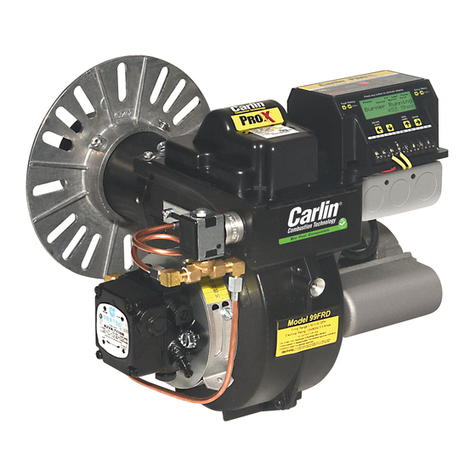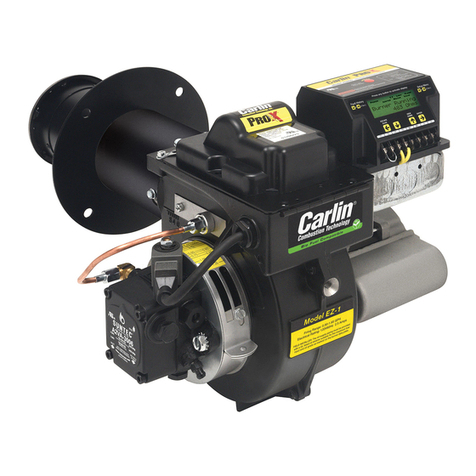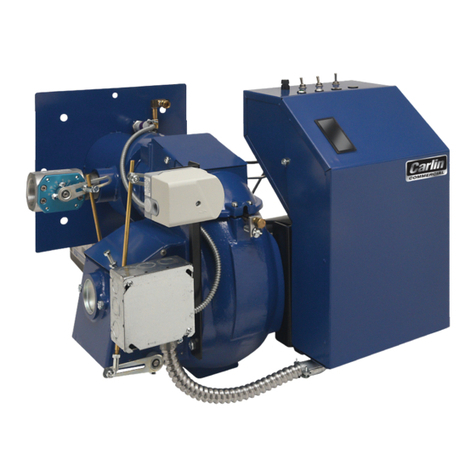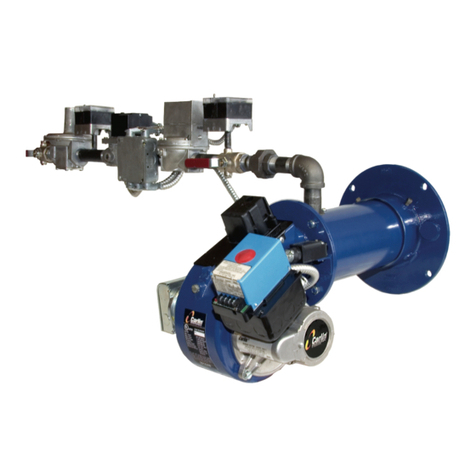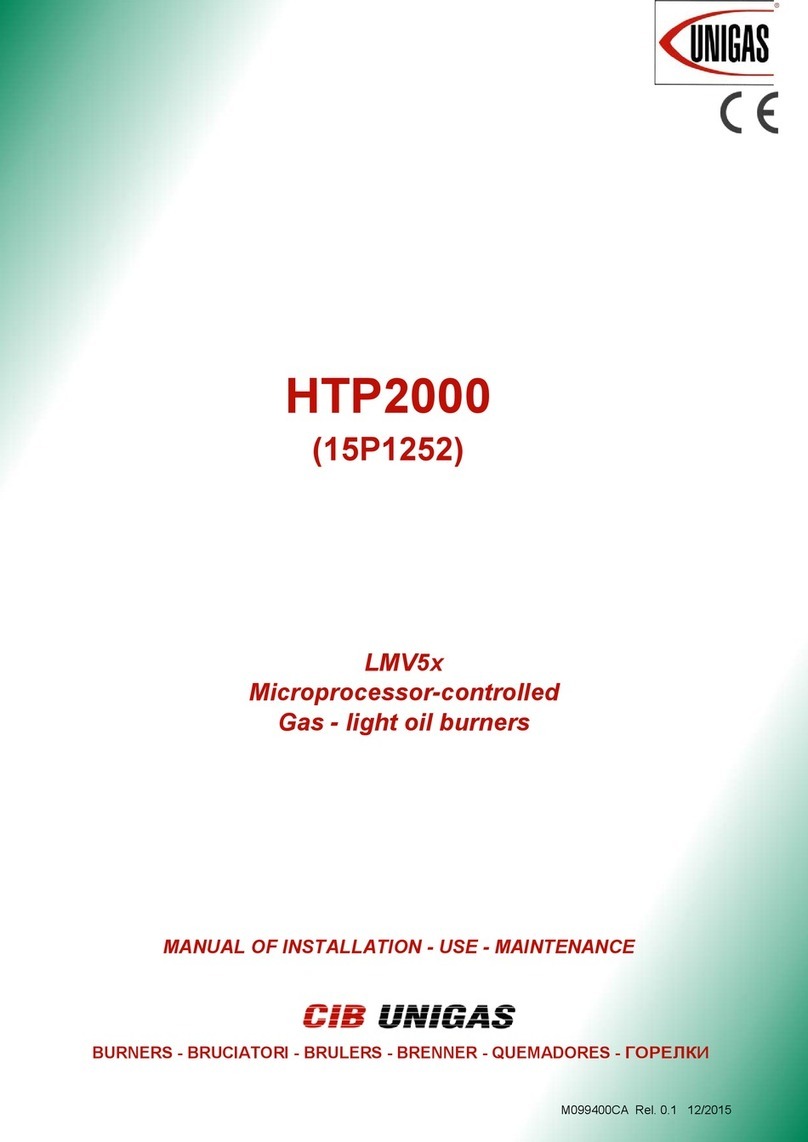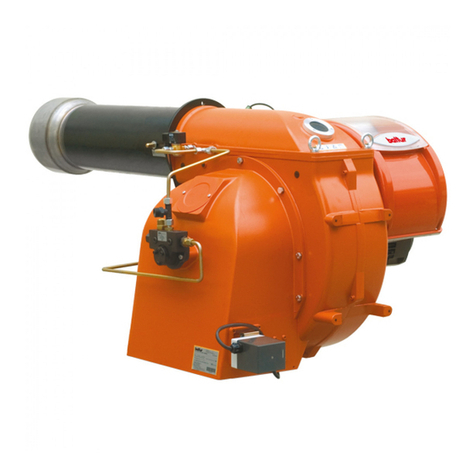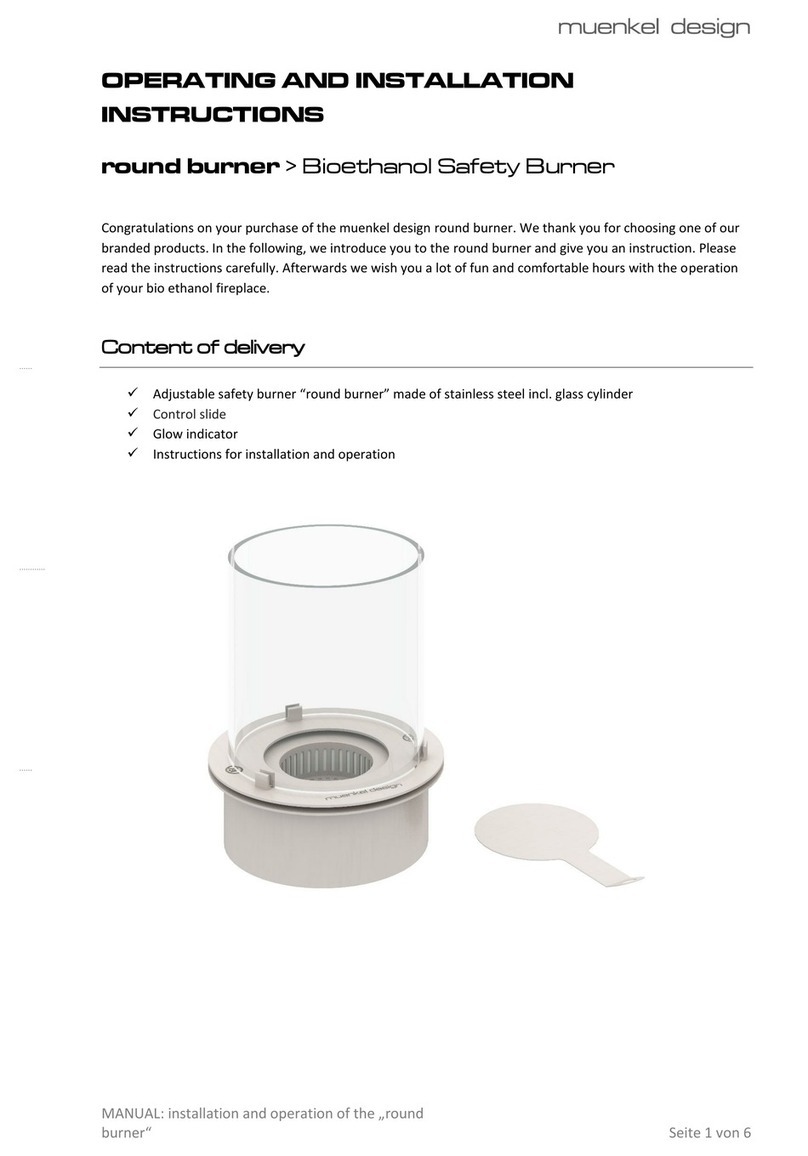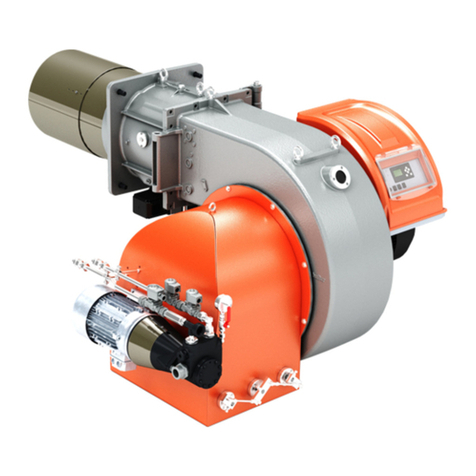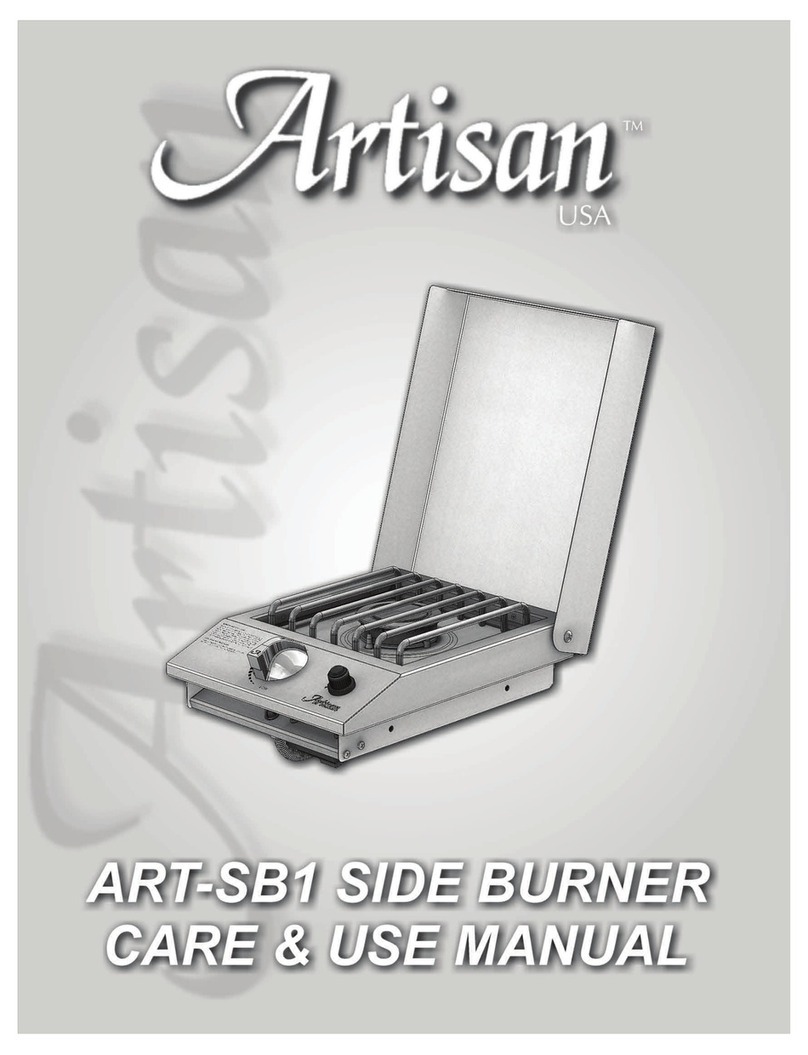
6
2. Burner Operation
OPERATION: LOW-HIGH-OFF
(No optional Aquastat or Pressuretrol, supplied by others)
The 702CRD is supplied with a 70200 oil
primary control pre-programmed from
the factory with a 30 second valve delay
ON (pre-purge) and a 30 second Motor
Delay Off (Post Purge). A constant 120
volts should be supplied to the “line in”
on the 70200 primary.
Do NOT use any control that has less
than a 10 second valve delay ON (pre
purge). 10 second pre purge ensures the
damper returns to the low fire air position
before start up in a case where the con-
trol has no motor delay off (post purge)
and/ or there is not 120 volts suppled to
the “line in” on the control
It is important that the installation of
the oil burner, piping and fittings, safety
devices, controls, electrical wiring and
equipment be done in accordance with
national and/or local regulations of the
authorities having jurisdiction over such
installation.
1. Upon a call for heat, the 70200 primary control will
indicate pre-ignition and turn on the ignitor for 3 sec-
onds before energizing the motor.
2. The 70200 will then energize the orange lead and pull
in the motor contactor, indicating valve delay ON (pre-
purge) for 30 seconds. At the end of the 30 second
pre-purge, the low fire oil and redundant safety valves
(located on the left side of the junction box) will open
and supply oil to the nozzle with pressure between
100 PSI and 150 PSI
3. After ignition and a 15 second delay, the burner will
drive to high fire (as long as the low fire hold switch is
in the up position).
As the damper motor drives to high fire and begins
to open the air shutter the damper motor end switch
will energize the high fire blocking valve located on
the pump, and will increase the pump pressure at the
nozzle up to 300 PSI. The air shutter will continue to
open until it it fully open (see Siemens Damper motor
instructions, page 9, for low/high end switch transi-
tion adjustments, if needed).
When the call for heat is satisfied, the burner will shut
off.
OPERATION: LOW-HIGH-LOW-OFF
Using low-high-low-off operation typically
saves 20% on fuel usage.
Using either an additional aquastat for a water boiler
or a pressure control for a steam boiler, wire your control
to break the (low-high operation) of the damper motor
by identifying a tagged wire nut in the oil valve junction
box. The burner will now operate Low-High-Low-Off.
(See wiring diagram for details.)
1. On a cold start call for heat, the burner will drive to
high fire.
2. As the temperature or steam pressure begins to reach
the operating limit the L-H-L controller (set below
operating high limit) will drive the burner to Low Fire.
3. If the temperature or pressure drops below the dif-
ferential of the L-H-L controller it will drive the burner
back into high fire.
4. If low fire can reach the operating limit demand, the
burner will shut off and remain in stand by until the
next call for heat.
NOZZLE SPECIFICATIONS
• Always use the Carlin OEM Burner Setup Tables for
nozzle specifications when the appliance is listed,
Many nozzles are available through your wholesaler or
Carlin Combustion.
• If your appliance is not listed in the OEM Burner Setup
Tables, you may use Table 1 on page 2. The 60B
Hago nozzle is the standard nozzle for this burner and
usually provides the best combustion results. Other
makes of nozzles may or may not provide satisfactory
combustion results.
FORCED DRAFT FIRING
Due to the back pressure in forced draft units, the max-
imum firing rate of a burner is reduced. The greater the
pressure, the lower the maximum GPH capability
becomes. Table 1 (page 2) shows this. Note that the
Table stops at 0.70 inches W.C., the maximum recom-
mended back pressure for the 702CRD burner.
The combustion head settings for forced draft firing
would be somewhat greater than those shown in Table 1
(page 2) which is for zero pressure or natural draft.
